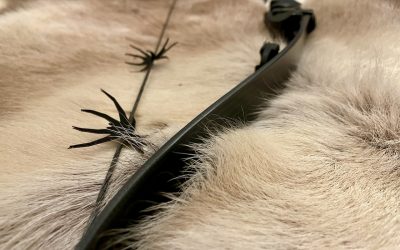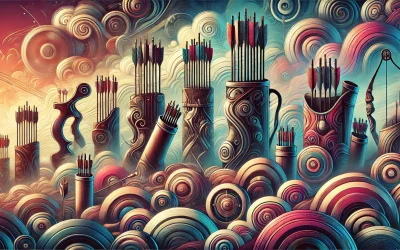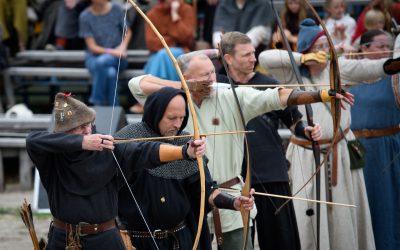Arrowheads have been a cornerstone of human ingenuity and survival for millennia. From the earliest stone points crafted by our ancestors to the precision-engineered designs of today, these small yet powerful tools tell a story of adaptation, artistry, and necessity. In this article, we explore the fascinating history of arrowheads, their evolution, and the diverse purposes they have served across time and cultures.
From Flint to Iron: The Evolution of Arrowheads
Prehistoric Beginnings The journey of the arrowhead begins in the Stone Age, when early humans discovered the art of flintknapping. Flint, obsidian, and other stones were meticulously shaped into sharp points. These early arrowheads, often barbed or leaf-shaped, were used primarily for hunting. Their creation required remarkable skill, as even slight imperfections could render them ineffective.
Bronze and Iron Ages As humanity advanced, so too did its materials. The Bronze Age saw the introduction of metal arrowheads, which were more durable and versatile. With the Iron Age, arrowheads became sharper and stronger, designed to pierce through tougher hides and even primitive armour. This era marked a shift from purely utilitarian designs to more specialised forms tailored for specific uses.
Medieval Innovations The Middle Ages brought about significant innovations in arrowhead design. The bodkin point, a long, narrow tip, was developed to penetrate chainmail and plate armour, revolutionising archery in warfare. Broadheads, with their wide, cutting edges, were favoured for hunting large game. The craftsmanship of medieval arrowheads reflects a blend of functionality and artistry, with many examples displaying intricate designs.
Types of Arrowheads and Their Uses
Over the centuries, arrowheads have been designed to suit a wide range of purposes. Here are some of the most notable types:
- Broadheads: Featuring wide, sharp edges, broadheads are designed for maximum cutting damage. Historically used for hunting and warfare, they remain popular in modern hunting.
- Bodkin Points: Narrow and sturdy, bodkin points were crafted to pierce armour. These were a staple of medieval warfare, allowing archers to counter heavily armoured opponents.
- Barbed Arrowheads: Barbs ensured that the arrow remained embedded in the target, making these points ideal for hunting and fishing. They were also used in warfare to maximise injury.
- Leaf-Shaped Points: Often associated with ceremonial or symbolic use, these elegant designs were also practical for general hunting.
- Modern Field Points: Used for practice and target shooting, these points are designed for minimal damage to targets while maintaining accuracy.
Cultural and Symbolic Significance
Beyond their practical uses, arrowheads have held profound cultural and symbolic meanings. In some Native American tribes, arrowheads were considered sacred and used in rituals or as talismans. In ancient Egypt, ornate arrowheads were often buried with the dead, symbolising protection in the afterlife. Arrowheads were also a form of trade, serving as currency or valuable goods exchanged between cultures.
Craftsmanship Through the Ages
The creation of arrowheads has always been a craft of precision and skill. Prehistoric flintknappers worked tirelessly to perfect their tools, while medieval blacksmiths combined metallurgy and artistry to produce specialised designs. Today, modern manufacturers use advanced materials like carbon steel and titanium to create arrowheads for hunting, sport, and historical recreations.
Modern Connections: Lessons from the Past
While the materials and methods have evolved, the fundamental principles of arrowhead design remain unchanged. Modern hunters and archers still rely on the balance, aerodynamics, and functionality that ancient craftspeople prioritised. The history of arrowheads reminds us of the enduring ingenuity of humanity and our ability to adapt tools to meet our needs.
Conclusion
Arrowheads are more than just tools; they are symbols of human innovation and resilience. From the Stone Age to the modern era, these small artefacts have played a vital role in survival, warfare, and cultural expression. As archers and history enthusiasts, we carry forward a tradition that spans thousands of years, connecting us to the craftspeople and hunters who came before us. Next time you nock an arrow, take a moment to appreciate the rich history embedded in its tip.






0 Comments